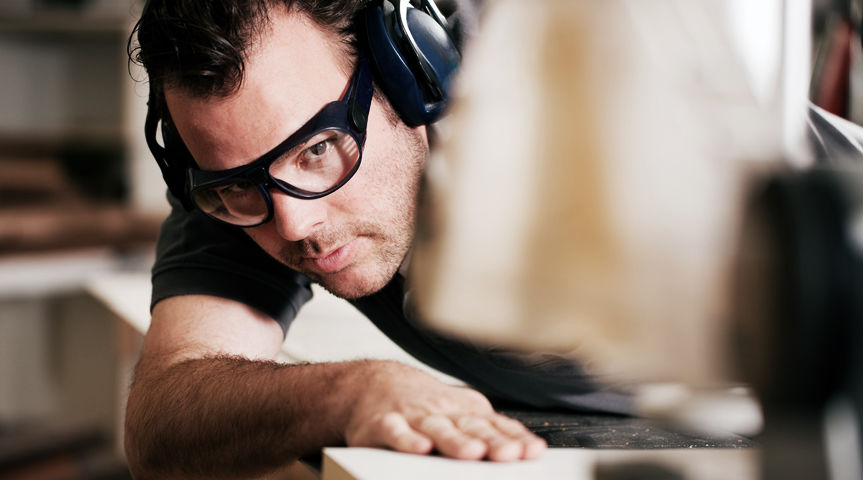OUR BUSINESS
To work in the packaging industry is to know corrugated fiberboard like the back of your hand, believe us. When you start a business that ships products, you enter the world of corrugated, and there’s surprisingly a lot to learn.
To get you up to speed, here’s our short intro to the material that’s going to take your business to great places. (Get it?)
What it is & what it’s not
First, let’s clarify one thing: corrugated board isn’t the same thing as ordinary cardboard. Everyday cardboard is just a heavy stock of paper; if you tried to ship products in actual cardboard boxes, the outcome would not be good.
Corrugated is a material made from one to three layers of thick, rippled (or “fluted”) paper in between flat layers of paperboard. You know when you pick up a piece of thick cardboard and you can see wavy layers in between flat layers, kind of like sandwich fillings between pieces of bread? That’s corrugated.

What it’s used for
As we already mentioned, ordinary cardboard isn’t meant for shipping products. It doesn’t provide enough protection. Corrugated board, on the other hand, is up to the task. It maintains its shape, takes a beating, and absorbs a lot of shock. You can also custom print it to help promote your brand.
How to design your corrugated box
Here’s when we get into the details! Once again, there are more than you think there might be. Creating the right box for shipping your products safely and cost-effectively means making a series of decisions.
Decision 1: Pick your flute type
Your flute type determines how strong and stackable your box will be. It also impacts how thick its walls will be. You have a choice between types A, B, C, D, E, and F. The thicker the flute, the stronger and wider the corrugated board.
-
A: 1/4” thick, used for breakable products or those that need to be stacked high
-
B: 1/8” thick, used for self-supporting products like cans that don’t need boxes with as much stacking strength
-
C: 11/64” thick, slightly thicker than B type, this is the most commonly used flute
-
D: 3/32” (2.3mm) thick, and is a proprietary micro flute
-
E: 1/16” thick, highly printable and often used for retail packaging
-
F: 1/32”, thick, highly printable and often used for retail packaging

Decision 2: Pick your board type
You have four board types to choose from. Naturally, the one you choose depends on what you intend to use it for.
-
Single-Face: Sold in rolls and wrapped around products, this is one sheet of liner glued to one sheet of corrugated.
-
Single-Wall: Used for everything from shipping boxes to retail displays, this is one sheet of corrugated glued between two sheets of liner and by far the most common.
-
Double-Wall: Used for shipping heavier products, this is two sheets of corrugated glued between three sheets of liner.
-
Triple-Wall: Used for shipping delicate products like industrial parts, this is three sheets of corrugated glued between four sheets of liner.

Decision 3: Know your Material Strength Tests
There are two different tests to grade corrugated board: the Mullen test or the Edge Crush Test. The most commonly used boxes in the industry are the 200# Test (Mullen Burst Test) and 32 lb. ECT (Edge Crush Test). These are widely accepted as interchangeable. GLBC’s RSC stock boxes all meet 32 lb. ECT.
Mullen Rating
To test the strength of the corrugated cardboard boxes, a hydraulic testing device (called a Mullen tester) applies pressure to a flat piece of suspended corrugated. It measures the force (in pounds per square inch) required to burst that board. This indicates how a box will perform when handled individually or when subjected to rough handling.
Edge Crush Test (ECT)
Many products are now shipped on pallets and this means that the stacking pressure on boxes has become a greater concern. The ECT test was established to tell how much weight a corrugated box can withstand on edge. ECT measures the force required to crush a sample of board standing on its edge therefore testing how much force it can withstand before collapsing.
Decision 4: Pick your box style
Corrugated boxes are highly customizable, so don’t think that the options we’re listing here are all you can choose from. Nevertheless, these are your most common choices::

-
Regular slotted container (RSC): The standard box, with two outer length flaps that meet in the center of the box.
-
Full overlap container (FOL): With this box, the outer length flaps overlap each other to provide more protection.
-
One-piece folder: Commonly used to ship books, this is one piece of board that folds around a product.
-
Full telescope design: This box has a top that slides onto a bottom, and is a great choice for shipping fragile items.
Decision 5: Choose your print
Over the last few years, corrugated packaging and printing have changed a great deal and consumers have a variety of print capabilities to choose from.
-
Flexography (flexo)
-
Offset Lithography (litho)
-
Screen Printing
-
Digital Printing
Each method has its advantages and disadvantages so to learn more make sure to ask your packaging specialist.
Read this whole primer and still feel a little uncertain about what you need? Reach out and let’s have a chat! Like we said at the top, there is a surprising amount to know about corrugated board. The name of the game is having the least material and weight for your box, while also getting the level of shipping protection you need. Let’s find your sweet spot together.
Our Services Include
All Packing Boxes // Customize Design // Super Flexo Printing // Offset Printing // Pizza Box // Much more...




